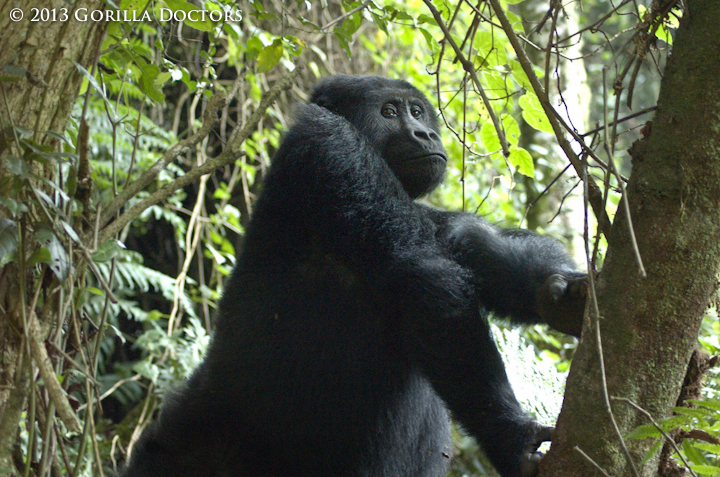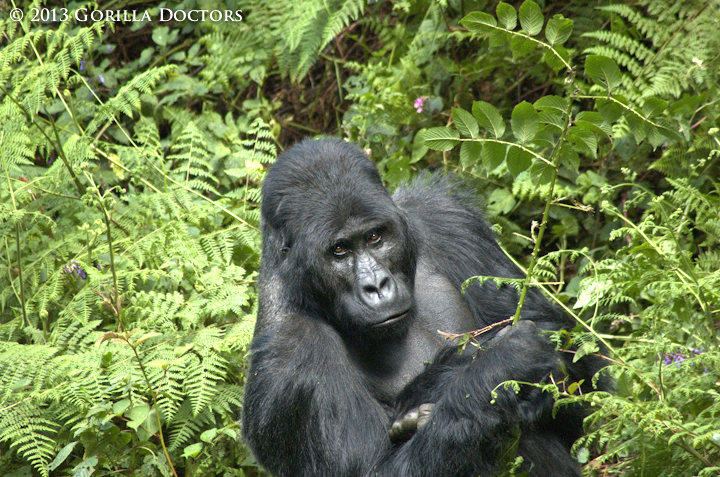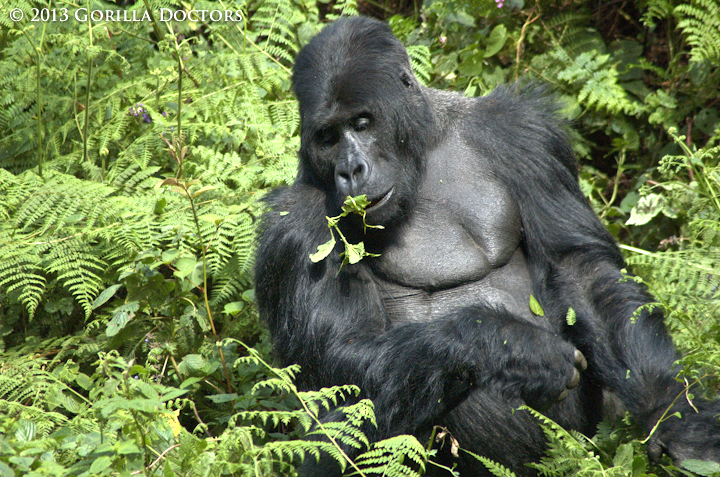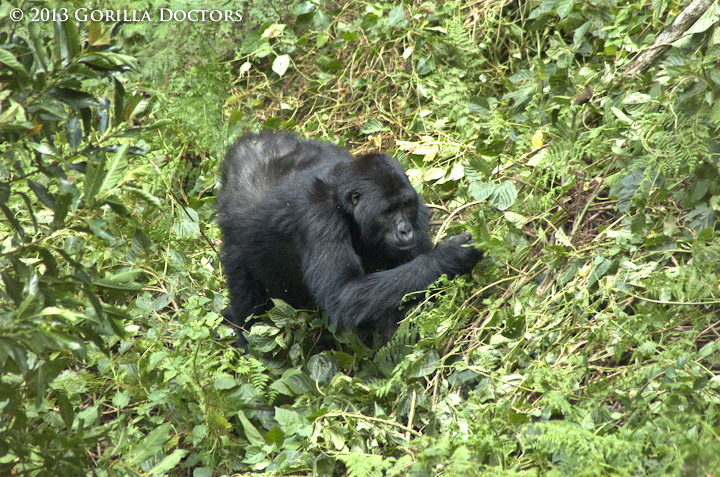Mt. Tshiabirimu Gorillas Thriving Despite Challenges
By Gorilla Doctors Staff on Saturday, July 27th, 2013 in Blog.by Jessica Burbridge
The seven remaining Grauer’s gorillas living in Mt. Tshiabirimu’s isolated pocket of forest outside of Virunga National Park, DRC are an intriguing group. This small population has drastically reduced in number over the past decade and is the subject of a concerted effort to ensure their survival. These gorillas are genetically classified as Grauer’s, or Eastern Lowland gorillas, but the forests of Mt. Tshia where they range are more similar to the afromontane forests where a different subspecies, the mountain gorillas, dwell. These seven gorillas, separated into two groups (one of four individuals and one of three), have been isolated from other populations of DRC’s Grauer’s gorillas for some time. Gorilla Doctors, along with our partners, The Gorilla Organization and the Congolese Park Authority (ICCN) are eager to receive results from a genetic analysis of samples taken from a blackback on March 13, 2013. (For more on this, click here.)
 Ten-year-old blackback Mukokya of Kipura group on Mt. Tshiabirimu.
Ten-year-old blackback Mukokya of Kipura group on Mt. Tshiabirimu.
This tiny group of gorillas, with just two females, are not only facing the challenges of isolation, poaching, and habitat destruction, but also, potential toxin exposure. In examining tissue samples from deceased Mt. Tshia gorillas, Gorilla Doctors Veterinary Pathologist Dr. Linda Lowenstine found two of the adults had changes in the liver suggestive of exposure to a toxin. She reported that the changes were severe and may have contributed to the death of a female and a silverback. Dr. Lowenstine suggests that the gorillas may be ingesting some type of poisonous plants containing pyrrolizidine alkaloids. “I wondered if the Mt. Tshiabirimu gorillas were eating something they might not usually eat because of human encroachment” says Dr. Lowenstine. Before adding “of course, this is just speculation at this point.”
Dr. Martin flew from Goma to Mt. Tshiabirimu to conduct health checks of these gorillas on July 24th. The DRC Field Vet reported that Kipura group, containing 4 individuals, was located in the Kaghese area, ranging at an altitude of 2573 meters. “After 2 hours of trekking, we found all four night nests and the gorillas were close by, resting in day nests” said Dr. Martin. “The group may have traveled a long distance the previous day to feed. It is the dry season and most of Tshiabirimu’s vegetation is bamboo forest… there are no bamboo shoots yet and suitable food is only found in pockets in this forest.”
 Tsongo, the dominant silverback of Kipura group on Mt. Tshiabirimu.
Tsongo, the dominant silverback of Kipura group on Mt. Tshiabirimu. Dominant silverback Tsongo feeding on vines on Mt. Tshiabirimu.
Dominant silverback Tsongo feeding on vines on Mt. Tshiabirimu.As the team approached the group, blackback Mukokya (who was anesthetized in March for sample collection for the genetic analysis) began to charge. The silverback remained in his nest, and the other individuals stayed close to him. After 15 minutes, the small group began to move down into the valley in search of food. Kambula, the sole female of the group and estimated to be 10 years old, was feeding far from her fellow group members. After one hour of observation, she rejoined the other gorillas.
 Blackback Kambula feeding on vegetation on Mt. Tshiabirimu.
Blackback Kambula feeding on vegetation on Mt. Tshiabirimu.
The following day, Dr. Martin and his team tracked Katsabara group, comprised of an unhabituated silverback, an adult female, and a new infant. The night nests were located at 11:08am in the Tumbwe area, at an altitude of 2535 meters. After an hour of trekking, the team found the trio of gorillas, resting in dense vegetation. The adult female, named Mwengesyali, is estimated to be over 22 years old and is the mother of blackback Mukokya (who is still in Kipura group). Mwengesyali, or Mwenge as she is known to the trackers, transferred from Kipura group and is habituated to human presence, although her new mate is not. “Mwengesyali and her newborn infant seemed to be in good health. Dominant silverback Katsabara charged us and appeared very agitated, so after 30 minutes, we decided to end our observation to avoid further provocation that could endanger the infant’s life.”
Stay tuned for results of the genetic analysis of the Mt. Tshia gorillas…
You can follow the Gorilla Doctors health monitoring efforts on our Facebook page, where we post photos and notes from our monthly visits.
Please consider supporting us by making a secure online donation. Every dollar you give goes to directly supporting our gorilla health programs and One Health initiative. Thank you for your generosity.


 Donate
Donate